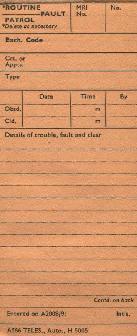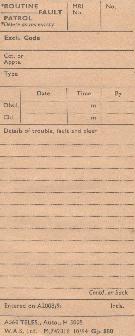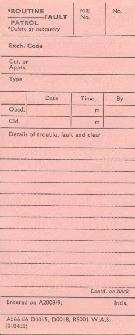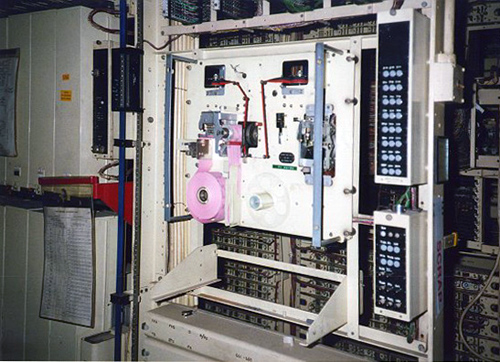 |
Maintenance was very important in a Strowger exchange. If not attended to, faulty selectors would, over a period of time, cause a deterioration in the grade of service. Faulty equipment could be reported, following a 'routine' patrol, by means of a hand written docket A566 or machine printed overnight. |
By their very design, Strowger exchanges were very resilient and unlike electronic systems would never simply "fall over" and fail completely. However, the 'hard-wired' paths through the exchange needed to be checked regularly to ensure that every switch and junction was functioning correctly.
Maintenance procedures were an integral part of every Strowger (and later types of) exchange. 'Rountiner' equipment, which could test every function of the exchange, was installed alongside the normal kit.
Routiners
The cleaning and testing of equipment was scheduled as part of the normal tasks of the engineers on duty. In small exchanges, a 'routine' check of all equipment could be completed from a panel of test keys operated by hand. A pink docket was written out for faulty items. In larger exchanges, automatic Routiners were (usually overnight) used to test for example, all of the Group or Final Selectors in the exchange and print out details of any mechanisms which were faulty.
An engineer explains... "Those selectors that failed the tests were removed from the rack with the docket attached and taken to the repair room. Typical faults would be to do with pulsing, 'A' relay needing adjustment, or mechanical adjustment. Others would be broken wipers or wiper cords. After all the faults were taken care of, there were of course the other maintenance routines, mostly bank cleaning and lubrication, every 13 weeks for selectors. Interspersed with this would be requests from 151 to check for faults in the exchange, call traces and of course setting up the test call senders..."
Call Senders
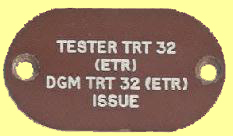 |
The tester TRT32 was used extensively as a 'test call sender' which spent all of its time automatically dialling numbers to check for faulty lines and junctions. |
Mnemonics
A popular way of memorising the operation of a 2000 type selector when checking for faults...
[To the tune of "Nick Nack Paddywack"]
A op's B,
B op's C,
N springs op HA, HB,
IDP, release CD,
Then the switch goes rotary.
P1 free,
Release HB,
HA re-op by B3,
A released by CD,
B releases slow(ho)ly
(Note the slow-release slugged B relay!)
[IDP is Inter-Digit Pause: the standard dial was designed to give a pause of 200ms before the transmission of each impulse train.]
Clear Codes
All faults that were resolved by the engineers were allocated a 'clear' code, i.e. the reason for the fault & the action taken. A common clear was RWT - Right When Tested, meaning that when the circuit or equipment was tested, it functioned correctly.
[To the tune of "Hey Diddley Dee"]
RWT! Oh that's the clear for me.
I long to be an engineer
And this will be my favourite clear
RWT! Oh that's the clear for me.
Acknowledgements
Thanks to Dave Milner [Sheffield Cutler Trunks], Andy Jackson [formerly TO(A) L/Balham ATE] and Paul Reid.
All logos and trade marks are the property of their respective owners and are used on the Light Straw site(s) for review only. Students and researchers are recommended to make their own independent enquiries as to the accuracy of the information contained therein.
